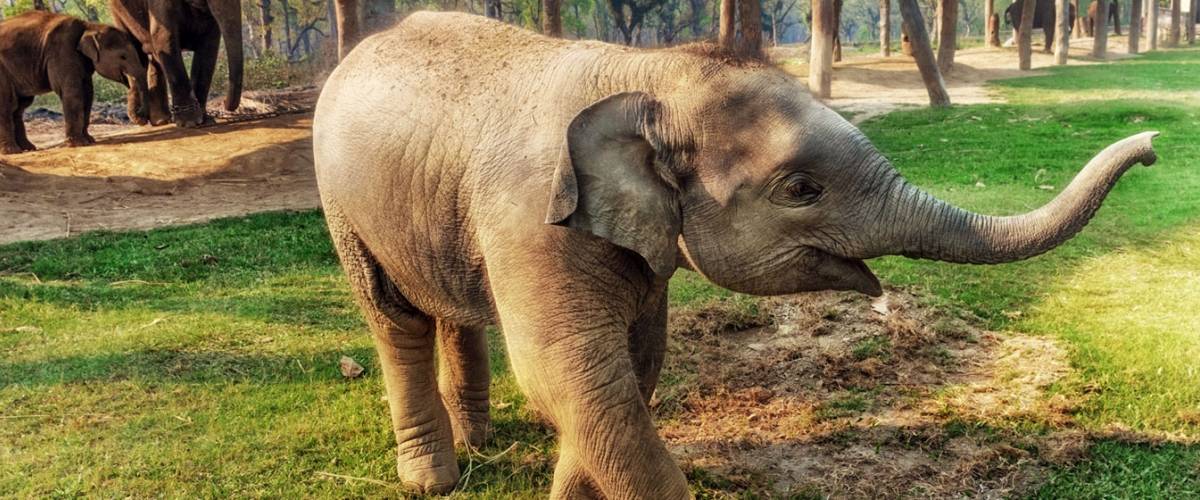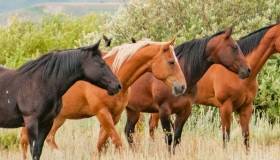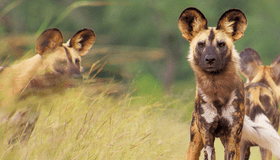
April 30, 2018 – Almost 25 years ago, the birth of Kumari, an Asian elephant, was celebrated as a victory in the fight to save a disappearing species. She was the star of the Smithsonian’s National Zoo in Washington, DC, an engaging favorite among zoo visitors and staff alike. But at 16 months of age, no one knew that a mysterious disease had already taken hold of Kumari and that she was in imminent danger.
One day, Kumari just seemed a little off her game. She would act ill one moment and then seem fine the next. Caretakers didn’t quite know what was going on and began to closely watch her around the clock, providing constant care. In less than a week from the first time she showed any sign of illness, Kumari suddenly died. Everyone that knew this much-loved elephant was crushed and perplexed about what had gone wrong.
Dr. Laura Richman, one of many elephant researchers funded by Morris Animal Foundation, was a pathology resident at the National Zoo under the mentorship of Dr. Richard Montali at the time, and became part of the investigative team trying to identify the mystery illness that took Kumari’s life.
“After a complete gross examination, we had no clarity. There was no blockage or things that you might anticipate for a young elephant. But we did see hemorrhage everywhere in her body. At first, we thought this could be septicemia, a bacterial infection that enters the blood and can cause hemorrhages or maybe this was some sort of toxin. But this turned out not to be the case. We just couldn’t put our finger on it,” said Dr. Richman.
But somewhere in the back of her mind, Dr. Richman had a nagging feeling that this could be some type of virus.
As soon as the first slide went under the microscope, Dr. Richman began looking for viral inclusion bodies, clear signs pointing to a viral infection. Within seconds, she saw what looked like a type of virus in the liver and in the heart of baby Kumari. What Dr. Richman didn’t know was that this finding would spur decades of research into the one of the most difficult viruses to study on the planet, elephant endotheliotropic herpesvirus (EEHV), a disease that can kill juvenile Asian elephants.
What makes this virus so hard to study is the inability to culture and grow EEHV in a laboratory setting. A critical step in disease research is the ability to grow the pathogen you want to study to learn how it infects cells and, most importantly, how to block its infection tactics. For several decades now, no one has been able to robustly grow this herpesvirus in culture for study purposes.
Morris Animal Foundation has funded numerous researchers focused on finding ways to culture this elusive virus, and we’re closer than ever to making this a reality. We also have supported research into supportive treatments. Today, EEHV can be treated with a rapid application of antiviral drugs, which is effective in about a third of cases. But researchers are unsure if the antiviral drugs are effective, if it’s the supportive care that is helping, or if the immune defense mounted by the affected elephants would have taken care of the infection by itself. Clearly, more work is needed.
Another focus of our EEHV funding is new diagnostic tools that can identify multiple EEHV strains to help evaluate infections. Researchers now know of seven distinct species of herpesviruses in elephants that have more than 50 novel genes not found in other herpesviruses or species. Four virus strains are only found in African elephants and hardly ever cause disease. The other three are only found in Asian elephants and can be deadly; up to 20 percent of all Asian elephant calves born in zoos and many more in orphan camps and the wild die from herpesvirus infections.
Today, EEHV is considered a worldwide threat and doesn’t just exist in elephants living in zoos or rescue facilities. A team of researchers including the Smithsonian’s Erin Latimer and Dr. Gary Hayward and veterinary colleagues in India documented cases of lethal disease in free-ranging herds in India; it has also been seen in Sumatra, as well as other Asian range countries. Diagnosis of EEHV in wild elephants is tricky; researchers need to find viable tissue from dead animals to diagnose the disease and many countries that have wild elephant populations simply do not have the infrastructure to tackle the problem. But that is changing.
“Researchers have now expanded outside of North American zoos and are studying elephants in the wild. We have helped set up field laboratories in multiple countries, and recently held a training workshop in Thailand for participants from multiple countries, so veterinarians have the tools they need to diagnose and treat the disease”, said Dr. Richman.
Of course, the best line of defense to stop this virus in its tracks would be a preventive vaccine. Vaccines target specific pathogen proteins to “educate” the vaccine recipient’s immune system to react to the same protein in an invading virus or bacteria. As a critical first step in this endeavor, Morris Animal Foundation-funded researchers are looking for EEHV proteins that could be considered good targets for vaccine development. A successful EEHV vaccine would greatly contribute to improving health care of conservation and wild-range Asian elephants, as well as African elephants affected by this disease.
For the many conservationists caught in a desperate race to save Asian elephants, EEHV is a formidable foe in this struggle. Asian elephant calves are most susceptible between the ages of one and eight years of age. But there is good news. Research is helping us each day find ways to fight back so the Kumaris of the world can live long and healthy lives, and, will be here to help give life to the next generation of elephants.
Learn more about our other work to improve the health and well-being of elephants.




